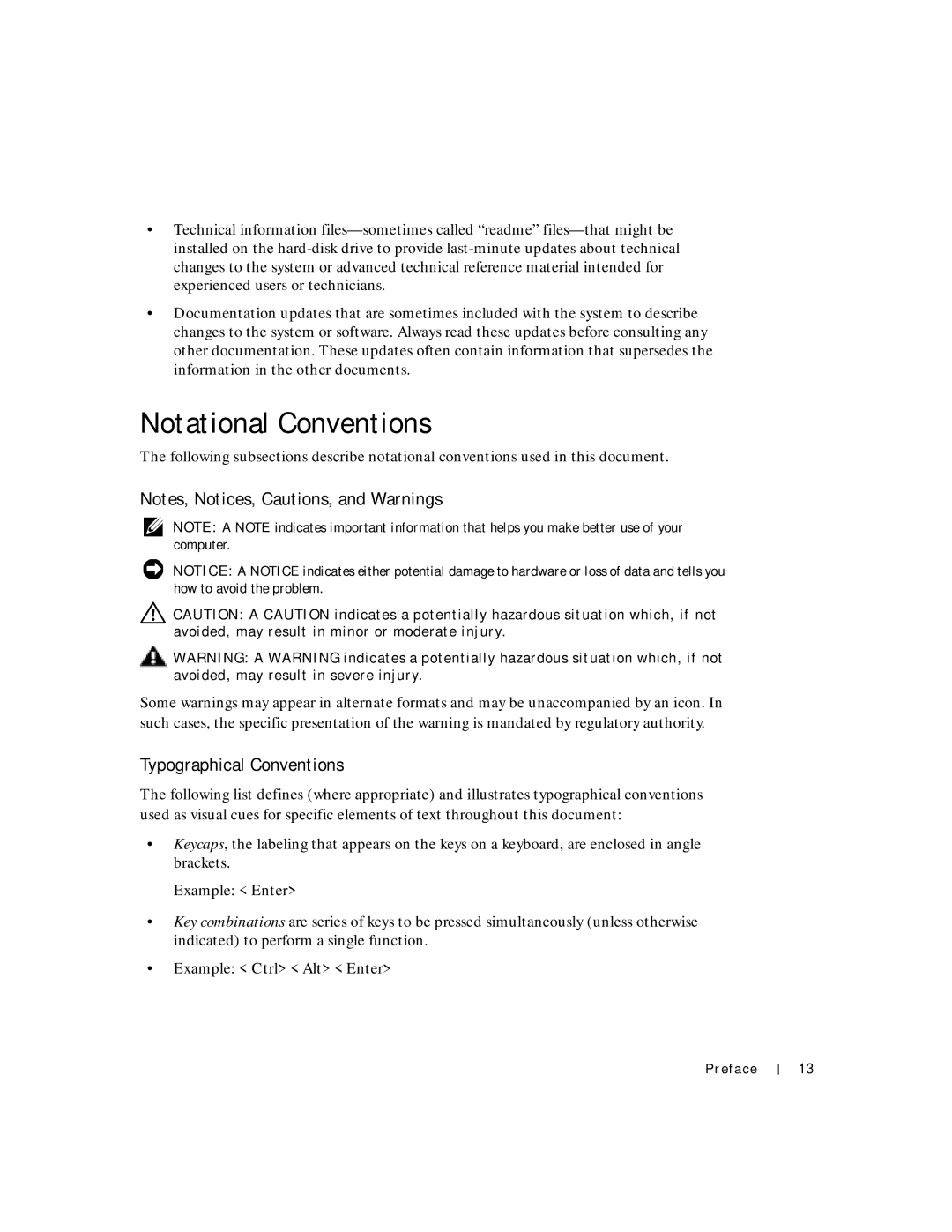
•Technical information
•Documentation updates that are sometimes included with the system to describe changes to the system or software. Always read these updates before consulting any other documentation. These updates often contain information that supersedes the information in the other documents.
Notational Conventions
The following subsections describe notational conventions used in this document.
Notes, Notices, Cautions, and Warnings
NOTE: A NOTE indicates important information that helps you make better use of your computer.
NOTICE: A NOTICE indicates either potential damage to hardware or loss of data and tells you how to avoid the problem.
CAUTION: A CAUTION indicates a potentially hazardous situation which, if not avoided, may result in minor or moderate injury.
![]() WARNING: A WARNING indicates a potentially hazardous situation which, if not avoided, may result in severe injury.
WARNING: A WARNING indicates a potentially hazardous situation which, if not avoided, may result in severe injury.
Some warnings may appear in alternate formats and may be unaccompanied by an icon. In such cases, the specific presentation of the warning is mandated by regulatory authority.
Typographical Conventions
The following list defines (where appropriate) and illustrates typographical conventions used as visual cues for specific elements of text throughout this document:
•Keycaps, the labeling that appears on the keys on a keyboard, are enclosed in angle brackets.
Example: <Enter>
•Key combinations are series of keys to be pressed simultaneously (unless otherwise indicated) to perform a single function.
•Example: <Ctrl><Alt><Enter>
Preface
13
